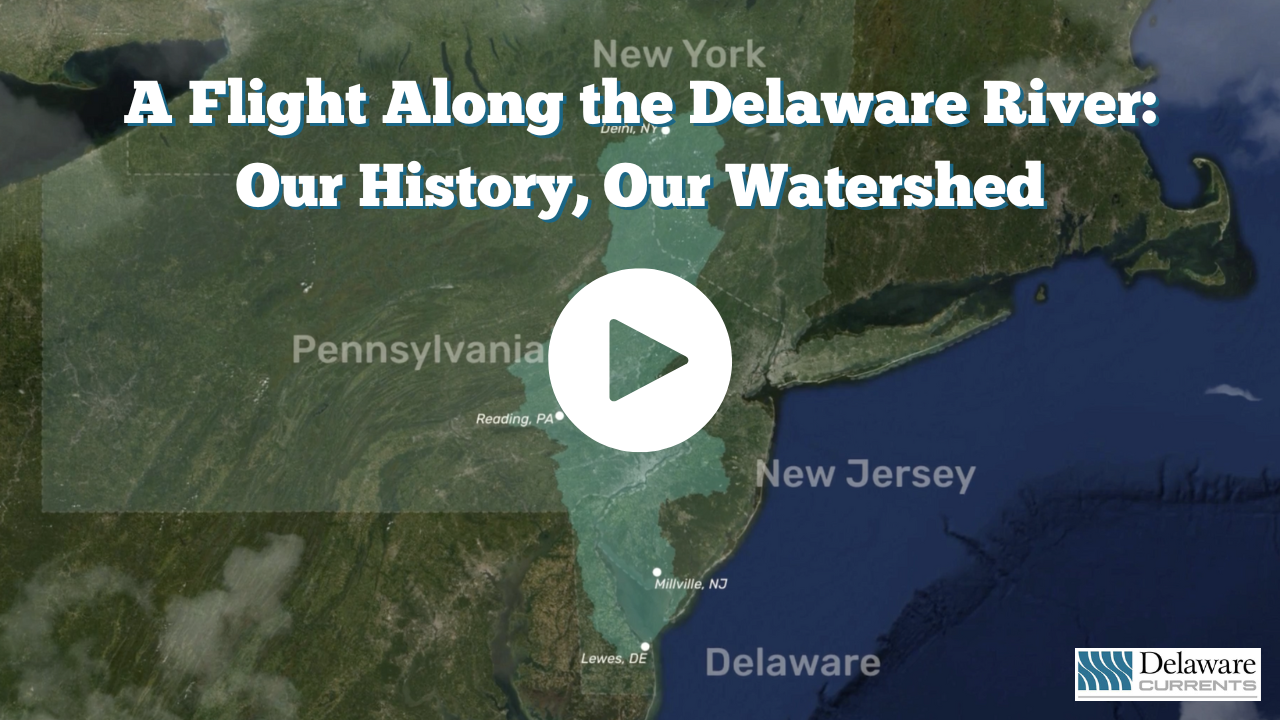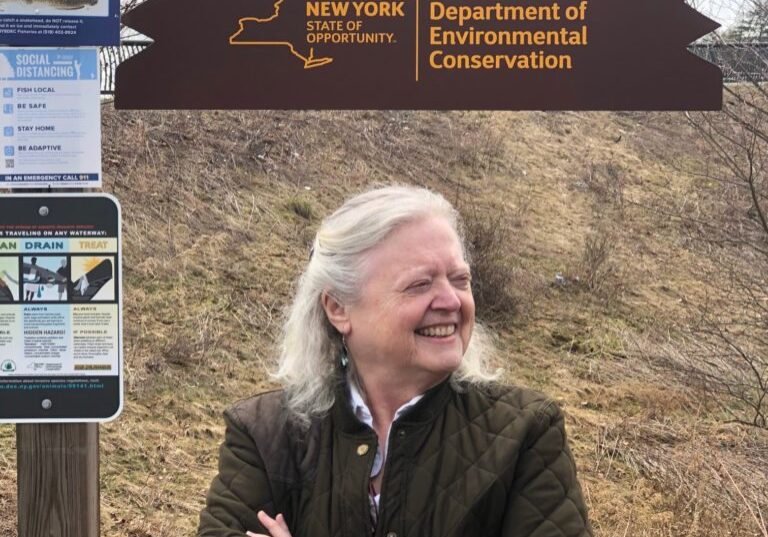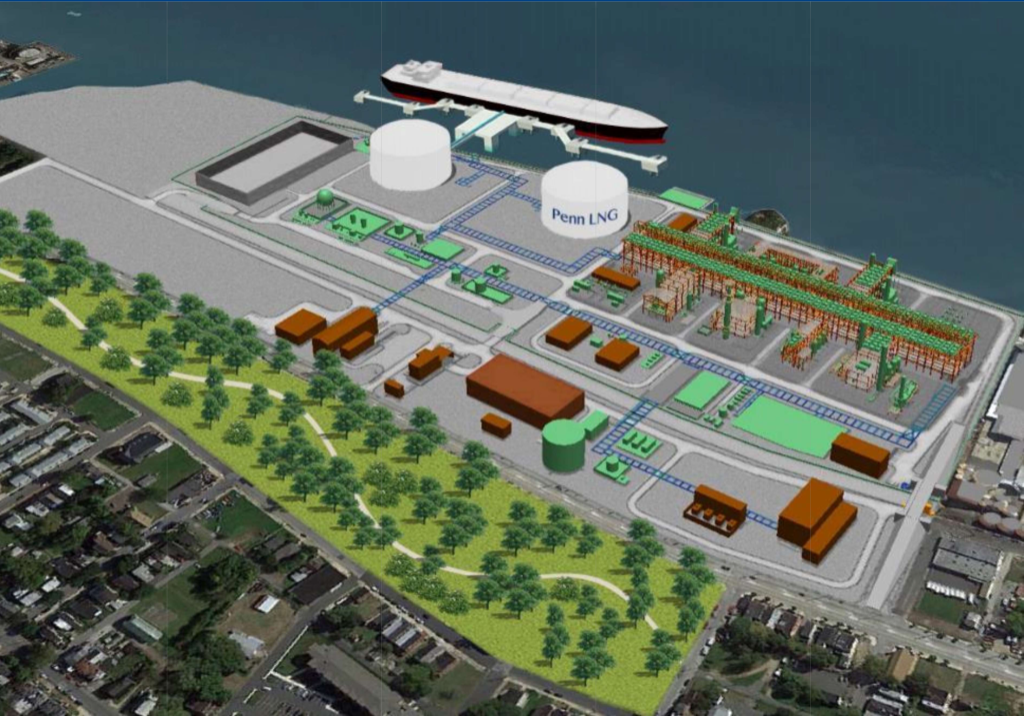
EPA issues new water quality rules for urban stretch of Delaware River
| September 29, 2025
The U.S. Environmental Protection Agency has announced new water quality standards for a 38-mile stretch of the Delaware River between Philadelphia, Pa., and Wilmington, Del., capping what has been a twisty decade-long fight over how to improve the river’s health in that urban corridor.
The final rule, which was announced on Sept. 22, is expected to improve water quality and support locally and regionally significant fish populations, such as striped bass, American shad, and the endangered Atlantic sturgeon and shortnose sturgeon, according to an EPA announcement.
Several commercially and recreationally important fish species live and spawn in the Delaware River between Philadelphia and Wilmington.
“Ensuring that these oxygen-sensitive fish have adequate water quality to support their reproduction and growth will protect and increase their populations,” the EPA said in a statement. “In turn, a more productive fishery will bolster commercial and recreational fishing and associated industries, supporting job growth and ecotourism.”
In its new water quality standards, the EPA has established aquatic life protection and propagation as an achievable “designated use” in this section of the Delaware
The EPA said its new rule betters aligns water quality standards in this urbanized section of the Delaware River with Clean Water Act standards that already exist upstream and downstream.
How to best benefit aquatic life?
The fight over the rules goes back at least a decade, with levels of dissolved oxygen in this stretch of the river at the heart of years of research, debate, policy-making and litigation.
Dissolved oxygen in this contested part of the river has been diminished by discharges from wastewater treatment plants, like those in Philadelphia, Camden, Trenton and Wilmington, among others. Dissolved oxygen is vital for the propagation of fish, particularly the endangered Atlantic sturgeon, which is seen as a bellwether for the health of this section of the river.
While treatment plants follow all the rules, their wastewater (and those rules) don’t address nitrogen in that water. Nitrogen can be processed by “good bugs” in the river, except if there’s too much nitrogen, they can’t.
This section of the river is heavily industrialized and plagued with ammonia pollution arising from treated sewage (urine and feces) that is discharged into the river. An excess of nitrogen absorbs oxygen, which leads to a depletion of dissolved oxygen, which creates an oxygen “sag” in some parts of the river.
In many cities, there is also a problem of combined sewer overflow systems—a complication that allows stormwater to be funneled into sewer lines and to the wastewater treatment facilities.
If a storm is overwhelming enough, those treatment facilities get swamped and untreated or partially treated waste can pour into the river. That includes more oxygen-depleting ammonia (a byproduct of the breakdown of urine, for instance) as well as the stew of other contaminants that get poured or flushed down the drain.
“The EPA used site-specific data and information from published scientific literature relevant to the endangered sturgeon species to derive the dissolved oxygen criteria,” the agency said, adding that its new standards replace previous dissolved oxygen criteria enacted by New Jersey, Pennsylvania and Delaware, for the specified zones of the Delaware River.
Corkscrew path getting here
The new EPA rules come after years of fierce battles led by the Delaware Riverkeeper Network.
In April 2022, the network and a group of nonprofits were frustrated with the slow pace of the work of the Delaware River Basin Commission, which had for years researched and labored to set new water quality standards.
The environmental groups filed a petition with the EPA seeking to bypass the DRBC and to compel the EPA to issue revised standards. A month later, the DRBC completed its scientific and engineering work and in December 2022, the EPA agreed with the Riverkeeper, and took over the process.
In September 2023, the DRBC formally ceded action to the EPA. In December 2023, the EPA publicized its proposed rules for public comment. And in October 2024, the Delaware Riverkeeper Network sued the EPA, accusing it of foot-dragging in finalizing its regulations.
Eventually, both sides reached an agreement that called for the EPA to issue the finalized rules by Sept. 22 (pushed back from an earlier June deadline).
However, there were no ironclad guarantees that the new rules would be introduced, given the changes in the White House and an administration that has been openly hostile to stricter environmental regulations.
As recently as August, public water utilities were appealing to the Trump administration for a last-minute reprieve from the rules as they would prove costly to implement. Delaware Currents reported in 2021 that it would cost $1.5 million for Trenton and as much as $3 billion for Philadelphia.
The Philadelphia Water Department, which had been outspoken in its opposition to the proposed new rules, did not respond to a request for comment. The rules are to take effect in 60 days, according to an EPA memo.
Read our complete coverage of this issue in a special report series.
New rules draw praise
The DRBC’s director, Kristen Bowman Kavanagh, said the final rules “will provide a significant ecological boost to this section of the Delaware River.”
In a statement, Maya K. van Rossum, the Delaware Riverkeeper, called the new standards “a dramatic improvement for the quality of the Delaware River, aquatic life, and the many communities that depend upon a healthy river.”
“When we first filed the Clean Water Act petition requesting that the EPA take on the leadership role in developing these new standards, a petition that was later backed by legal action, we did so because of the need for science-driven decision-making,” she said, adding that kind of leadership was not forthcoming from the states or the DRBC.
“We felt we had to turn to the U.S. EPA to secure a science-driven process and outcome, rather than one that was being driven by politics or industry,” she said. “I am pleased to see that we seem to be getting what we were striving for and hoping for—a good quality decision.”



![DC_Image [Image 4_Assunpink Meets Delaware] meets Delaware The Assunpink Creek on its its way to meet the Delaware River. The creek passes through woods, industrial and commercial areas and spots both sparkling and filled with litter.](https://delawarecurrents.org/wp-content/uploads/bb-plugin/cache/DC_Image-4_Assunpink-meets-Delaware-1024x768-landscape-14f069364113da5e8c145e04c9f2367c-.jpg)



